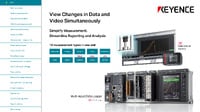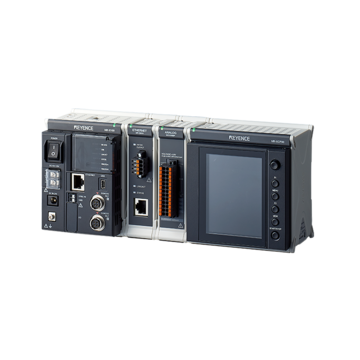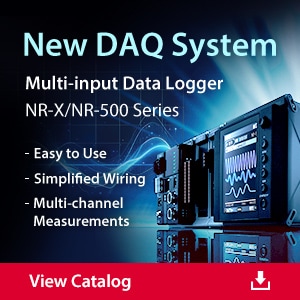Data Acquisition (DAQ)
4 Ways Temperature Monitoring Systems Can Solve Logistics Problems
-
Tags:
- Temperature
Temperature monitoring systems play a crucial role in the logistics industry by ensuring that products are stored and transported at the correct temperature. In this guide, we will discuss four ways in which these systems can help solve logistics problems.
What is a Temperature Monitoring System?
Temperature monitoring systems’ primary purpose is to monitor and control the temperature of perishable goods or temperature-sensitive products in controlled environments. This includes tracking and regulating the temperature of any product during storage, but also during transportation, ensuring it remains within manufacturer specifications.
We’re here to provide you with more details.
Reach out today!

Challenges in Logistics Related to Temperature Monitoring
Approximately 12% to 14% of the world’s food is wasted during distribution and storage, and some 20% of thermally sensitive products are damaged during transit, with most issues arising from temperature-related irregularities.
These numbers underscore the need for temperature monitoring and control in logistics, and if the issue is left unresolved or unaddressed, it could lead to monumental financial losses.
Types of Temperature Monitoring Systems
There are various types of temperature monitoring systems, but in the context of logistics thermometry and industrial automation, we’re typically referring to data loggers. Temperature data loggers are portable temperature monitoring systems that can record the temperature and monitor particular surroundings.
Thanks to the advancements in technology, temperature data loggers, like the KEYENCE’S NR-X or NR-500 multi-input data logger, can now track and record all the necessary data while the assets are in transit, ensuring that food in transport are secure or if any damage or deterioration of the product in transit was caused by unwanted temperature fluctuations.
Important Parts of a Temperature Monitoring System
Temperature data loggers are typically equipped with temperature sensors and the capacity to record data. However, some data loggers have a modular design, and their input depends on the processing unit the device is attached to.
To measure temperature, your temperature monitoring system would have to rely on digital temperature sensors, thermocouples, resistance temperature detectors, and thermistors, depending on the application.
Discover more about this product.
Click here to book your demo.

4 Ways Temperature Monitoring Tools Solve Logistics Problems
The biggest challenges the logistics industry faces are compliance issues, damaged goods, traceability issues, and managing operational costs. However, some of these challenges can be overcome by implementing KEYENCE’s NR-X Series with the appropriate processing unit. Here are four ways temperature monitoring tools solve logistics problems.
1. Improved Compliance
Compliance with different temperature regulations for perishable goods varies by country, and all products require storage in ideal temperatures for transport. This makes it difficult for logistics companies to follow and prove compliance with regulations.
Fortunately, the NR-X Series data logger, equipped with NR-TH08 or NR-TH08P measurement units, can sample temperature at 10 Hz per second at a 24-bit resolution, which means they are capable of detecting the slightest temperature changes. Logistics companies can use the logged data to prove compliance with industry regulations.
2. Improved Traceability
Manufacturers are now required to guarantee and demonstrate the safety of their products without incurring additional overhead costs, which adds pressure to the logistics industry to maintain quality throughout the entire supply chain.
With adequate temperature measurement systems and control, manufacturers can now effectively guarantee and even prove the safety of their products.
3. Cost-Efficiency
A big component of the budget in the logistics industry is designated for vehicle maintenance, warehouse space leasing, and other administrative costs, which doesn’t leave much room for additional operational costs. Temperature monitoring systems effectively solve this issue by helping the business reduce wastage of spoilage, effectively improving production efficiency.
4. Maintaining Product Quality
The quality of products is the biggest concern for both manufacturers and consumers because perishable goods tend to go bad if not properly stored, handled, and transported, which poses a health hazard for consumers. This is particularly true for food and pharmaceuticals—the latter of which might become either ineffective or highly toxic if exposed to extreme temperature fluctuations.
Get detailed information on our products by downloading our catalog.
View Catalog

Features of a Temperature Monitoring System
Some of the most important features associated with the temperature monitoring system include automatic alerts for both high and low temperatures, paired with instant notifications via email, which would eliminate the need for constant checks and updates on temperature measurement.
A good temperature monitoring system would also have a control output for temperature control, making sure the temperature stays within the previously defined range. In that case, it would only inform you when the temperature reaches critical levels in case of malfunction.
Factors to Consider When Choosing Temperature Logging Systems
Package-level monitoring is a great function as it allows you to measure the temperatures of individual packages in transit. This requires a data logger with several inputs, and fortunately, the NR-X Series data logger, equipped with NR-TH08 or NR-TH08P measurement units, provides up to eight channels for measurement per module. With one data logger, up to 576 channels can be logged.
Reliable analytics are also important because a faulty sensor could lead to false alerts and incomplete reporting data. False temperature measurements and triggers could easily affect your business, so it’s important to look for a system that has reliable temperature monitoring data collection.
Lastly, the user-friendliness of your temperature monitoring solution is important, as it allows even the average users to monitor, analyze, and make the most of the collected data. This allows you to streamline data analysis, saving both time and money.
Contact us to learn more about how our advanced technology can help take your business to the next level.
Contact Us
FAQs about Temperature Monitoring Systems
What is the Purpose of the Temperature Monitoring System?
As stated above, the purpose of the temperature monitoring system is to continuously detect, record, and store temperature data for subsequent analysis to prove compliance with various regulations governing the perishable goods industries.
Besides simple monitoring, these systems often offer integration options, which enable them to control the temperature of the environment—for example, these devices can be integrated into the temperature controls of reefer trucks and ensure the goods are transported within the specified temperature range.
What are the Techniques Used in Temperature Monitoring?
There are several techniques used in temperature monitoring, including direct contact sensors and infrared sensing—both of which transmit their signals to data logger devices. Direct contact sensors often include thermocouples, resistance temperature detectors, and thermistors—the latter are particularly popular in applications that require high precision in a narrower temperature range.
If you’re looking to upgrade your temperature monitoring system, KEYENCE offers comprehensive temperature monitoring solutions, from direct contact measurements to no-contact infrared measurements. Contact us today!
We’re here to provide you with more details.
Reach out today!



